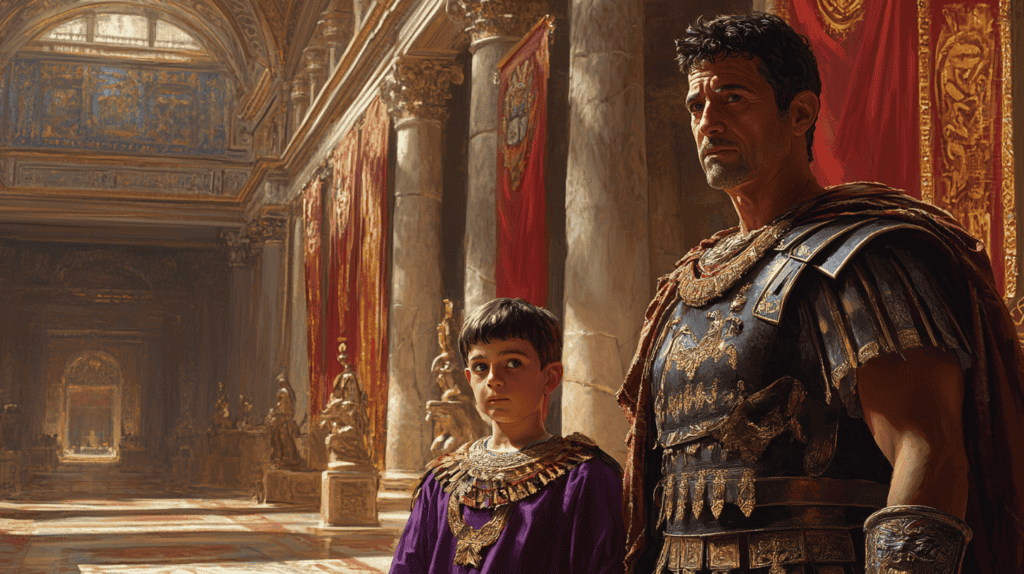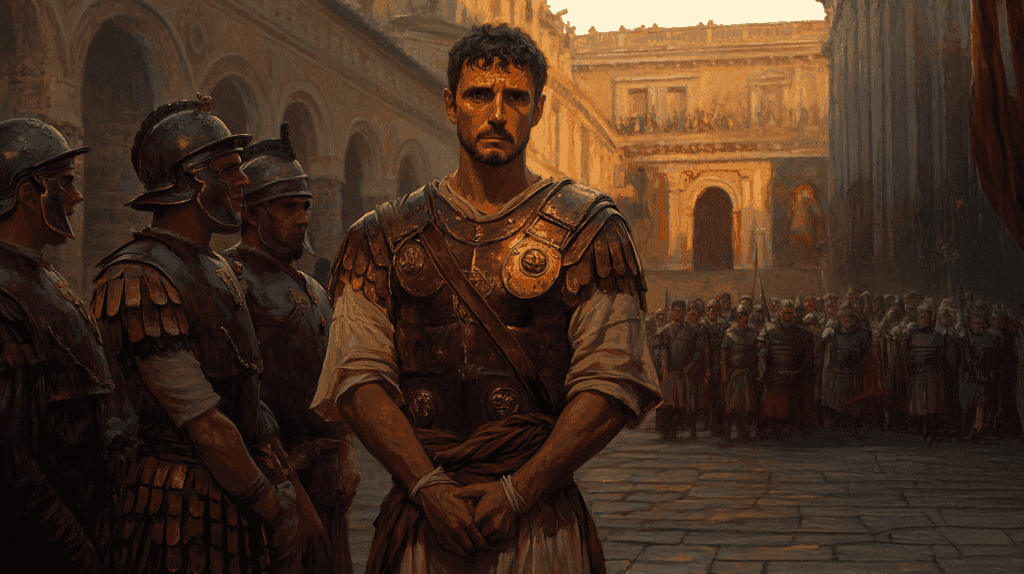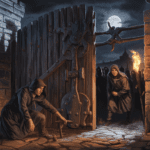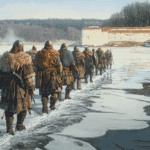
The execution of Flavius Stilicho in 408 CE marked a pivotal moment in the decline of the Western Roman Empire. As one of the last great Roman generals, Stilicho’s fall from power and subsequent death had far-reaching consequences for the empire’s stability and defense against barbarian invasions.
Background and Rise to Power
Stilicho, born around 359 CE, was of mixed Roman and Vandal descent. His military prowess and political acumen allowed him to rise through the ranks of the Roman army, eventually becoming the most powerful man in the Western Roman Empire. After distinguishing himself in various campaigns, including the Battle of the Frigidus in 394 CE, Stilicho gained the trust of Emperor Theodosius I.
The battle, fought against the Western Roman forces of usurper Eugenius, took place in the eastern Alps near the Frigidus River. Stilicho distinguished himself during the two-day battle, which resulted in a decisive victory for Theodosius. The Eastern army initially suffered heavy casualties but ultimately prevailed, aided by defections from Eugenius’ side and favorable weather conditions. This victory unified the Roman Empire under Theodosius’ rule, though it also depleted military resources in both halves of the empire
Upon Theodosius’s death in 395 CE, Stilicho became the guardian and regent for the young Emperor Honorius, who was only 10 years old at the time. This position gave Stilicho unprecedented power and influence over the Western Empire’s affairs.

Military Achievements
During his tenure as the de facto ruler of the Western Empire, Stilicho faced numerous challenges from both internal and external threats.
Africa
In 397, Gildo, the governor of Africa, rebelled against the Western Roman Empire by threatening to cut off Rome’s grain supply and aligning with the Eastern Empire. Stilicho persuaded the Senate to declare Gildo an enemy of the state and sent a small force of about 5,000 Gallic veterans to Africa under the command of Mascezel, Gildo’s own brother. Despite facing Gildo’s army of 70,000, Mascezel’s forces quickly defeated the rebels in 398. Gildo’s army disintegrated near Theveste, and he attempted to flee by sea but was captured and executed.

The Visigoths
In 401, Alaric and the Visigoths invaded Italy, threatening Emperor Honorius in Milan. Stilicho, summoning troops from Britain and the Rhine, confronted the Visigoths at Pollentia on April 6, 402 (Easter Sunday). Stilicho achieved a significant victory, capturing Alaric’s family and much of the Visigothic treasure.
Despite this setback, Alaric regrouped and marched towards Verona in 402. Stilicho pursued and defeated the Visigoths again in June, trapping them in mountain valleys. Although Alaric managed to escape with remnants of his army, he was forced to withdraw from Italy, temporarily ending the Gothic threat to the Western Roman Empire.
The Ostrogoths
In 405 CE, the Ostrogoth king Radagaisus led a massive barbarian invasion into Italy, threatening the Western Roman Empire. Stilicho mobilized a formidable force comprising 30 numeri (about 15,000 men) from the Italian field army, troops recalled from the Rhine frontier, and Gothic and Hunnic auxiliaries.
After months of pillaging in northern Italy, Radagaisus’s army besieged Florence. Stilicho’s forces relieved the city and forced the invaders to retreat to the hills of Fiesole. There, Stilicho’s army cut off their supplies and massacred them. Radagaisus attempted to escape but was captured and executed on August 23, 406.

Political Challenges and Controversies
Despite his military successes, and successfully leading Rome through a series of existential crises, Stilicho faced growing opposition and suspicion within the Roman court. Certainly his partial Vandal ancestry made him a target of xenophobic sentiment among Roman elites. Matters came to a head in 408.
The Roman army’s mutiny at Ticinum (modern Pavia) on August 13, 408 CE, resulted in the murder of several high-ranking officials aligned with Stilicho. His position was further weakened by his failure to effectively deal with the advance of Constantine III, a Roman usurper from Britain. Finally, a palace official named Olympius spread rumors that Stilicho planned to seize the Eastern throne for his son, further eroding trust in the general.
Realizing his precarious situation, Stilicho retreated to Ravenna, where he was arrested on the orders of Emperor Honorius. Honorius, who was present at the rebellious Ticinum camp, felt that in order to quell the riot and restore order among the troops, he must order the execution of his most able and experienced general. On August 22, 408 CE, Stilicho was beheaded, marking the end of his long and influential career.

Aftermath and Consequences
The execution of Stilicho had immediate and long-lasting effects on the Western Roman Empire:
- Stilicho’s son, Eucherius, was also executed shortly after his father’s death.
- Many of Stilicho’s commanders, and thousands of troops of Germanic origin, were purged from the army, weakening its effectiveness.
- Without Stilicho’s leadership, the Western Empire struggled to defend itself against barbarian incursions.
- The power vacuum left by Stilicho’s death contributed to the sack of Rome by Alaric and the Visigoths in 410 CE, a mere two years later.
The execution of Stilicho remains a subject of historical debate. While some contemporaries accused him of conspiring with barbarians and seeking to usurp power, modern historians often view him as a capable leader who struggled to maintain the empire’s integrity in the face of numerous challenges. Certainly Stilicho’s death marked the end of an era for the Western Roman Empire. As one of the last effective military commanders, his execution left the empire vulnerable to external threats and internal instability and helped speed-up its destruction.




